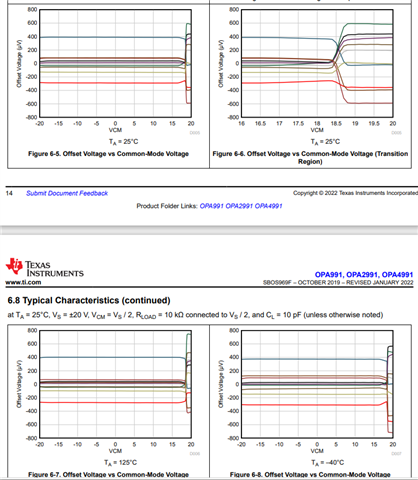- Ask a related questionWhat is a related question?A related question is a question created from another question. When the related question is created, it will be automatically linked to the original question.
Tool/software:
Hello,
Just wanted to confirm that the common mode voltage offset is going to remain flat from 20V and above?
We're going to be operating at 36Vin.

Thank you, Keith
Keith,
The answer to your question is a little complicated:
I hope that helps. Best regards, Art
Thanks Art, makes sense.
Could you please remind me on the different colors in the curves?
Keith,
The different colors are just to help differentiate the curves. Each curve represents a single device (one sample). If you look at multiple curves you will notice that some curves have larger transitions, and different levels of offset. The graphs in this data sheet look like they represent about 10 or 15 samples. Generally many more devices are included in the characterization but it would be hard to read the curve it hundreds of devices were shown.
Best regards, Art